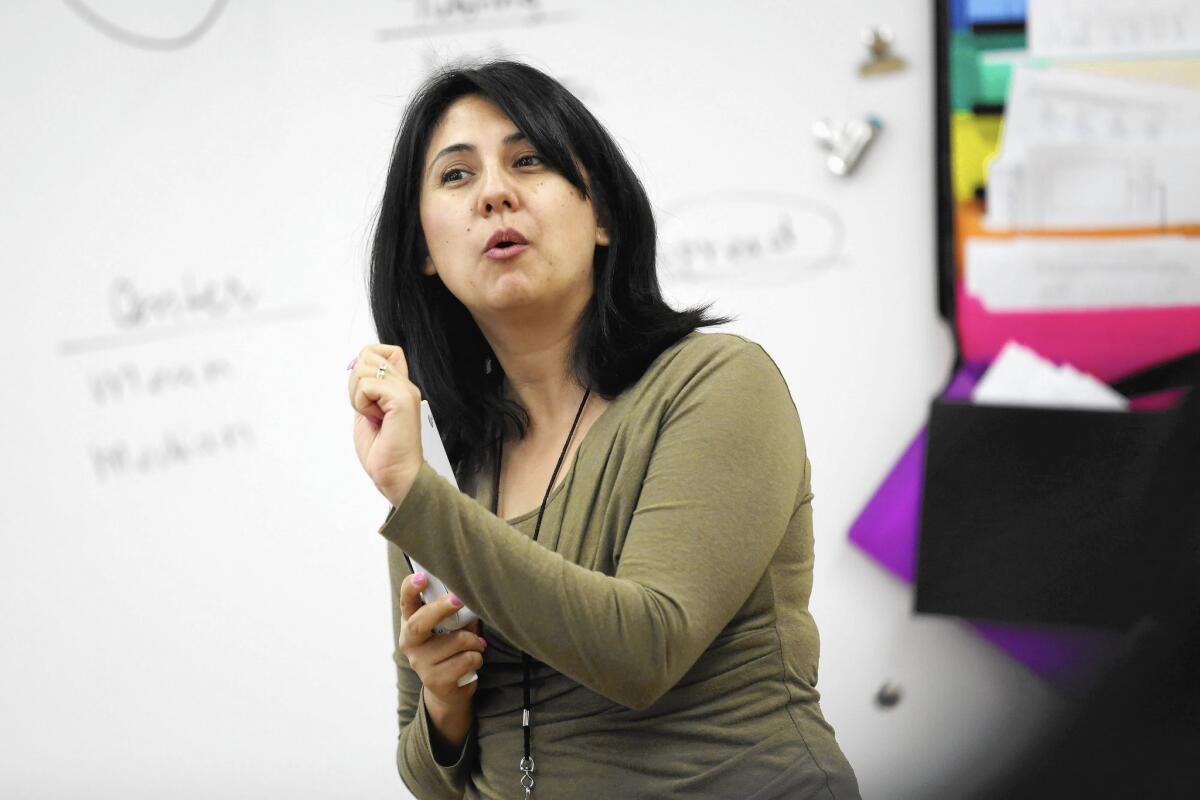Modern high school math should be about data science — not Algebra 2

- Share via
Thanks to the information revolution, a stunning 90% of the data created by humanity has been generated in just the past two years.
Yet the math taught in U.S. schools hasn’t materially changed since Sputnik was sent into orbit in the late 1950s. Our high school students are taught algebra, geometry, a second year of algebra, and calculus (for the most advanced students) because Eisenhower-era policymakers believed this curriculum would produce the best rocket scientists to work on projects during the Cold War.
It has been 50 years since the U.S. reached the moon, almost 30 years since the Berlin Wall fell. Technology has advanced to the point that tiny powerful computers are routinely carried around in pockets and purses. Times have changed, and so has the math people use in everyday life.
We surveyed 900 “Freakonomics” podcast listeners — a pretty nerdy group, we must admit — and discovered that less than 12% used any algebra, trigonometry or calculus in their daily lives. Only 2% use integrals or derivatives, the foundational building blocks of calculus. In contrast, a whopping 66% work with basic analytical software like Microsoft Excel on a daily basis.
When was the last time you divided a polynomial? If you were asked to do so today, would you remember how? For the most part, students are no longer taught to write cursive, how to use a slide rule, or any number of things that were once useful in everyday life. Let’s put working out polynomial division using pencil and paper on the same ash heap as sock darning and shorthand.
What we propose is as obvious as it is radical: to put data and its analysis at the center of high school mathematics. Every high school student should graduate with an understanding of data, spreadsheets, and the difference between correlation and causality. Moreover, teaching students to make data-based arguments will endow them with many of the same critical-thinking skills they are learning today through algebraic proofs, but also give them more practical skills for navigating our newly data-rich world.
Data-based math courses allow students to grapple with real-life problems. They might analyze issues about the environment, space travel or nutrition. Students can examine the threat of wildfires or the ways social media is tracking their data, learning how to apply math to real-world issues.
Other countries are moving much faster than the U.S. in instituting such a curriculum. Over the last 50 years, statistics and data science have become an integral part of the United Kingdom curriculum. Canada’s educational system, which is ranked highly internationally, also incorporates statistics and data.
In addition, the Program for International Student Assessment, or PISA, measures how effectively countries are preparing students for the mathematical demands of the 21st century. Last week, PISA released a mathematics framework that guides the assessments. Data literacy is central to the framework. In contrast, U.S. high school students learn algebra and geometry — and are woefully underprepared for the modern world.
The Los Angeles Unified School District is leading the way in updating the way math is taught. In 2013, the LAUSD secured approval from the University of California to recognize data science as a statistics course that students can substitute for Algebra 2 in the college pathway. Over 2,000 students are taking advantage of this option. The classroom we observed was full of critical thinkers who see data everywhere and appear comfortable interpreting, analyzing and questioning it.
Modernizing math at a national level will require an intensive effort from educators, policymakers and high school counselors — as well as from students and parents who will need to advocate for it. Some states are already exploring changes to their mathematics frameworks, while a fair number of innovative teachers across the country are independently developing their own data-focused lesson plans.
For this revolution to be carried out across the country, decision makers will need to hear from parents and other interested parties who recognize that our children deserve math instruction that is relevant to their lives.
Jo Boaler is a professor of mathematics education at Stanford University and author of “Limitless Mind.” Steven D. Levitt is a professor of economics at the University of Chicago and co-author of “Freakonomics.”
More to Read
A cure for the common opinion
Get thought-provoking perspectives with our weekly newsletter.
You may occasionally receive promotional content from the Los Angeles Times.









